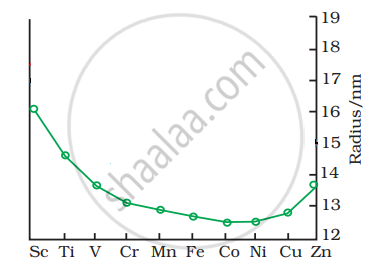Advertisements
Advertisements
प्रश्न
How is the variability in oxidation states of transition metals different from that of the non-transition metals? Illustrate with examples.
उत्तर
In transition metals, the oxidation state changes from +1 to higher states by a gradual change of one. For example, in manganese it is found to be +2, +3, +4, +5, +6, +7. In non-transition metals, the change is selective and generally changes by a difference of 2. For example, the oxidation states of Sn are +2 and +4.
संबंधित प्रश्न
Which is a stronger reducing agent, Cr2+ or Fe2+ and why?
Why are Mn2+ compounds more stable than Fe2+ towards oxidation to their +3 state?
What are the characteristics of the transition elements and why are they called transition elements?
When \[\ce{KMnO4}\] solution is added to oxalic acid solution, the decolourisation is slow in the beginning but becomes instantaneous after some time because ______.
Fill in the blanks by choosing the appropriate word(s) from those given in the brackets:
(activation energy, Threshold energy, increased, lowered, partially, full, d-d transition, Benzoic acid, benzaldehyde)
Only those transition metal ions will be coloured which have ______ filled d-orbitals facilitating ______.
The orientation of an atomic orbital is governed by
Give reasons for the following statement:
\[\ce{Zn}\], \[\ce{Cd}\] and \[\ce{Hg}\] are soft metals.
Which of the following characteristics of transition metals is associated with their catalytic activity?
Which of the following transition metals shows +1 and +2 oxidation states?
The trend of which property is represented by the following graph?

